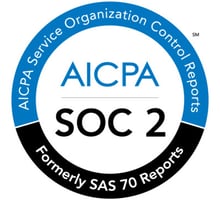At Reemo, we consider security as the very foundation upon which we innovate. In an environment...
Beyond RDP: How a New Remote Access Architecture Redefines Security
Anatomy of a Legacy Problem
To understand the extent of the change, we must analyze the design flaws of these protocols.
- RDP (Remote Desktop Protocol): Its main flaw is its connection model. By default, it puts a port (typically 3389) in listening mode, waiting for an incoming connection. This "open door" is an invitation for vulnerability scanners and brute force attacks that constantly run on the Internet. Even secured behind a gateway or VPN, the complexity remains, and the protocol itself remains a target, with a heavy history of critical flaws (RCE).
- VNC (Virtual Network Computing): Its multi-platform simplicity comes at the cost of often rudimentary security. Encryption is inconsistent, authentication is weak, and its raw image (framebuffer) transmission model is bandwidth-intensive and sensitive to latency, degrading the user experience.
- Invisibility on the network: The remote machine has no open listening ports. It is therefore invisible to vulnerability scanners and external attackers. The attack surface is drastically reduced.
- Simplified firewall bypassing: Only an outgoing flow is needed, which is generally allowed by standard security policies. Configuration is massively simplified.
- The end of VPN for workstation access: This model makes the traditional VPN obsolete for workstation access. The VPN extends the network perimeter to the user's device, which may be insecure. The ZTNA approach establishes a secure, authenticated, and application-specific (here, the remote desktop) tunnel without ever trusting the end-user's device.
Beyond Access: Isolation by Protocol Breakage
But what happens if the threat does not come from the access itself but from the user's activity, such as browsing untrusted websites, opening potentially malicious documents, or third-party access to your company's resources? For these high-risk use cases, a second, even more secure, architectural approach is necessary: protocol break.- The user interacts with the container via the same high-performance pixel stream.
- The container, in turn, browses the Internet from an environment completely isolated from the company's network.
- There is a complete break between the user's navigation protocol (the Reemo pixel stream) and the application's protocol (HTTP/S in the container).
The Synthesis: The Right Security for the Right Use
The future of remote access is not a single architecture, but a platform capable of offering the right level of security for each use case without ever sacrificing performance.
| Architectural Approach | Ideal Use Case | Key Mechanism | Replaces... |
|---|---|---|---|
| Reemo Proprietary Protocol | Access to existing physical/virtual workstations (developers, support, telecommuting) | Agent initiating an outgoing flow, no open ports | VPN, direct RDP/VNC |
| Protocol Breakage (Containers) | Web browsing, access to untrusted applications, sensitive data management, third-party access | Execution in an isolated and disposable container | Web proxies, workstations, BYOD |
Strategic Implications for CIOs and CISOs
This nuanced view of remote access offers new strategic levers:- Tailored Security (Least Privilege): Rather than a single, rigid security policy, it becomes possible to apply controls adapted to the risk level of each task. Access to an internal development workstation is a different risk than an employee consulting a suspicious link.
- Resource Optimization: Providing a disposable container for browsing is more efficient and secure than dedicating and maintaining a full virtual machine for this purpose.
- Agility and Productivity: Users have access to their tools instantly, from anywhere, without the friction of VPN clients or the slowness of legacy solutions. Performance becomes a catalyst for productivity, not a hindrance.
In conclusion, the conversation about remote access must go beyond the simple RDP vs. VNC debate. The solutions of the future do not just better secure an old model; they introduce new ones. By combining inverted connection architectures for secure access to existing workstations and protocol breakage models for isolating risky tasks, they offer a complete and adapted response to the complexity of the modern cybersecurity landscape. This is a fundamental change that allows organizations to no longer choose between security and flexibility but to benefit from both.
Create your account on Reemo.io and connect your distant computers
4K, 60 FPS and advanced security features for your business !

.png?width=50&name=Design%20sans%20titre%20(1).png)


